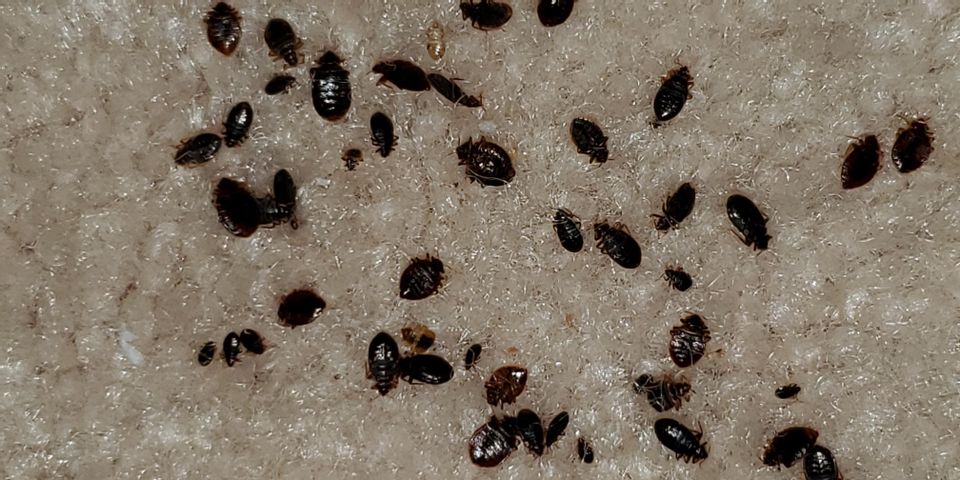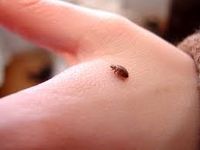
The Worst Case of Bed Bugs We've Ever Seen
Why Did This Happen?
What are these bugs and where do they come from?
Human dwellings, bird nest, and bat caves are the most suitable habitats for bed bugs because they offer warmth, areas to hide, and host on which to feed (Dolling 1991). Bed bugs are not evenly distributed throughout the environment but are concentrated in harborages (Usinger 1966). Within human dwellings, harborages include cracks and crevices in walls and furniture, behind wall paper and wood paneling, or under carpeting (Krueger 2000). Bed bugs are usually only active during the night but will feed during the day when hungry (Usinger 1966). Bed bugs can be transported on clothing and in luggage, bedding, and furniture (USDA 1976). Bed bugs lack appendages that allow them to cling to hair, fur, or feathers, so they are rarely found on hosts (Dolling 1991).
The adult bed bug is a broadly flattened, ovoid insect with greatly reduced wings (Schuh and Slater 1995). The leathery, reduced fore wings (hemelytra) are broader than they are long, with a somewhat rectangular appearance. The sides of the pronotum are covered with short, stiff hairs (Furman and Catts 1970). Before feeding, bed bugs are usually brown in color and range from 6 to 9.5 mm in length. After feeding, the body is swollen and red in color (USDA 1976).
Because of their confined living spaces, copulation among male and female bed bugs is difficult. The female possesses a secondary copulatory aperture, Ribaga’s organ or paragenital sinus, on the fourth abdominal sternum where spermatozoa from the male are injected. The spermatozoa then migrate to the ovaries by passing through the haemocoel, or body cavity (Dolling 1991). The female bed bug lays approximately 200 eggs during her life span at a rate of one to 12 eggs per day (Krueger 2000). The eggs are laid on rough surfaces and coated with a cement to adhere them to the substrate (Usinger 1966). Within 6 to 17 days bed bug nymphs, almost devoid of color, emerge from the eggs. After five molts, which take approximately ten weeks, the nymphs reach maturity (USDA 1976).


If a residential infestation is not addressed, the insects will reproduce exponentially. The number of bites that a person will suffer is directly related to the number of bites that a person will suffer is directly related to the number of bugs in the infestation.
If you suspect that you may have bedbugs in your home, please do not hesitate to call us here at GreenTec Pest Control. Our inspectors will visit your home at no charge and there is never any pressure to purchase our services. Our goal is to make sure that you are safe from these insects and that you have accurate information so that you are able to make an informed decision with regard your health and the welfare of your home.
GreenTec Pest Control appreciates your business and remains committed to provide you with answers to your questions. Please feel free to call (727) 847-6733 or email us at greentec@tampabay.rr.com.
About the Business
Have a question? Ask the experts!
Send your question

